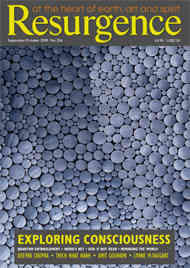To read these two compelling books back-to-back is to immerse oneself in radically contrasting habitats. Sarah Thornton’s book offers an insider’s view into the market-driven art world, its institutional hierarchies, privileged elites, and theatrical excitements, while Art and Upheaval plunges us into the world’s most dangerous hotspots, where interactive networks of unknown artists toil on the frontlines, responding to scenes of tragedy, targeting distressed communities in real need of help. The settings are as alien from each other as chalk and cheese but, in the curious way that opposites provoke and create a spur for consciousness, they also dovetail, like yin and yang. What they demonstrate is that art today has no stable or knowable centre; it arises in contexts that bear no causal relationship to one another. This becomes a stunning object lesson in how differently artists in the 21st century can perceive their role and purpose.
Like Albert Camus, a writer who worked in the French underground during World War II, William Cleveland’s artists have embraced the struggle to construct what Camus once described as “an art of living in times of catastrophe”. They seek, with their art, to keep the world from destroying itself “by fighting openly against the death instinct at work in our history”. In our own catastrophic times, there is a remarkable dichotomy between artists who believe unfailingly in the autonomy and self-sufficiency of art, and those who maintain that art should have some socially redeeming purpose. A sentence from my own book The Reenchantment of Art could be construed as the thrust of Cleveland’s entire narrative: “We need an art that transcends the distanced formality of aesthetics and dares to respond to the cries of the world.”
When I was an art student of Robert Motherwell’s during the 1950s, our class studied a single essay by
Ortega y Gasset, ‘The Dehumanization of Art’, for many weeks. Written in 1925, Ortega’s essay launched the emerging mindset of the modern artist as a creator of art that should be divorced from “the world of practical affairs.” Modern art, Ortega claimed, irreverently “flouts itself”. Not only does it choose to view itself as “a thing of no consequence”: it also rejects any concept of the artist as saviour.
Nobody could have foreseen, in this quite deliberate separation of art from life, the rise of a multimillion-dollar industry – that gaudy and totally artificial habitat known as the ‘art world’ – which would eventually become home to the kind of art that flouts itself. But that is what happened. Thornton probes brilliantly and deeply into this world, giving us penetrating glimpses without any malice or the remotest taste of iron in her mouth.
So what, besides hierarchies of status, reputation and wealth, makes the art world the art world? Most notably, it is the power to define art. Besides that, the art world is where the professionals hang out. By hanging out, socialising, and interviewing high-profile artists, dealers, curators, critics, collectors and auction-house experts during five years of “participatory” research, Thornton filled forty-seven blue notebooks with exciting artistic ‘juju’. Her book explores seven distinct subcultures: an auction sale at Christie’s in Manhattan; an art ‘crit’ class at CalArts in Los Angeles; the Basel Art Fair; the award ceremony for the prestigious Turner Prize in the UK; the editorial offices of Artforum magazine; a studio visit with Japanese Pop artist Takashi Murakami; and the Venice Biennale. The final product reads like a fabulously good novel you can’t put down.
In contrast, the communities of upheaval inhabited by Cleveland’s artists are both spiritually and geographically remote from the glamorous buzz of Thornton’s art world: six embattled communities on five continents – Northern Ireland, Cambodia, South Africa, Watts (California), Australia, and the former Yugoslavia – places convulsed by war and racial, religious or political strife, offering excitement of a very different kind. Cleveland’s experiences in these places have led him to a quite divergent picture of art’s potential: as a channel for healing human grief. This work is often dangerous, carried on in the face of “vicious politics”. “Imagine knowing”, he writes, “that your art-making could get you killed, but doing it anyway.”
Cleveland’s in-depth writing about artists in far corners pulling together and creating moral centres for healing and political reconciliation is sometimes ponderous but couldn’t be more timely or relevant now that we have a global leader in Barack Obama who has made community-organising the centrepiece of his presidency. It may just be that we have outlived the long period of ethical (and aesthetic) neutrality in our culture, now that politics is finally catching up with art. •
Suzi Gablik is an artist, writer and teacher whose books include Has Modernism Failed? The Reenchantment of Art and Conversations Before the End of Time.







